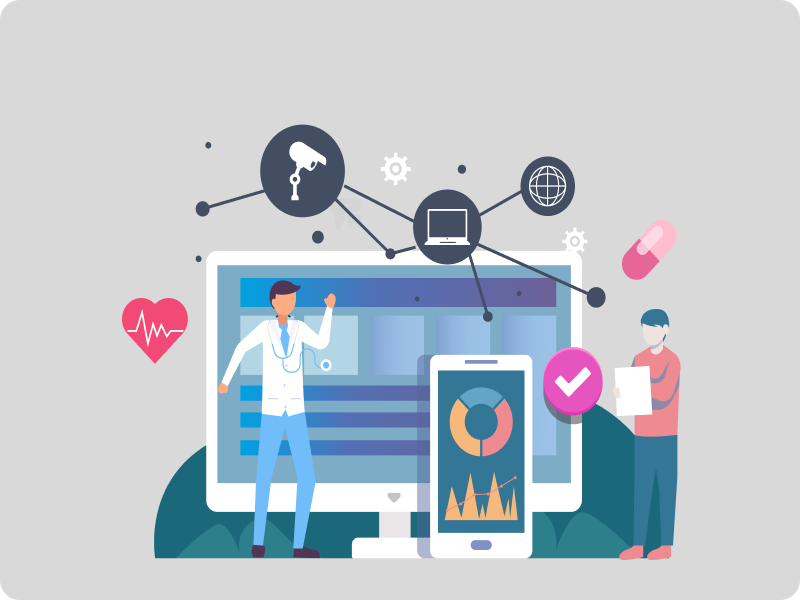Migrating to Cloud-Based EMRs: A Guide for Healthcare Providers
The healthcare industry is undergoing a digital transformation and one of the most significant shifts is the adoption of cloud-based Electronic Medical Records (EMRs). These systems offer unparalleled flexibility, scalability and efficiency compared to traditional on-premise solutions. However, migrating to a cloud-based EMR system can seem daunting for healthcare providers.
This guide explores the benefits, challenges and best practices for migrating to a cloud-based EMR system.
Why Healthcare Providers Are Moving to Cloud-Based EMRs
1. Cost Efficiency and Reduced IT Burden
Cloud-based EMRs eliminate the need for expensive in-house servers and IT maintenance, reducing overall operational costs. Providers can pay for only the resources they use, making scalability easier.
2. Anytime, Anywhere Access
With cloud-based systems, healthcare professionals can securely access patient records from any device with an internet connection, enhancing collaboration and remote patient care.
3. Improved Data Security and Compliance
Reputable cloud EMR providers implement advanced encryption, automatic backups and compliance with healthcare regulations (HIPAA, GDPR), ensuring patient data protection.
Learn how JGD Health’s solutions protect patient data.
4. Seamless Integration with Other Healthcare Systems
Cloud-based EMRs can easily integrate with telehealth, billing and diagnostic tools, ensuring smooth interoperability across healthcare systems.
5. Faster Implementation and Upgrades
Unlike on-premise systems that require complex installations and manual updates, cloud-based EMRs provide automatic updates, ensuring healthcare providers always use the latest features.
Key Challenges in Migrating to Cloud-Based EMRs
While the benefits are clear, the migration process comes with its own set of challenges:
- Data Migration: Transferring existing patient records to the cloud can be complex and time-consuming.
- Staff Training: Healthcare providers and staff need to be trained to use the new system effectively.
- Downtime: Transitioning to a new system may result in temporary disruptions to operations.
- Cost of Transition: While cloud-based systems are cost-efficient in the long run, the initial migration can involve significant expenses.
JGD Health offers expert guidance on digitization. Explore our solutions.
Step-by-Step Guide to Migrating to a Cloud-Based EMR
1. Assess Your Needs
Start by evaluating your current EMR system and identifying the features you need in a cloud-based solution. Consider factors like patient volume, specialty-specific requirements and integration with existing tools.
2. Choose the Right Cloud-Based EMR Provider
Research and compare different providers. Look for features like user-friendly interfaces, robust security measures and excellent customer support.
3. Plan the Migration Process
Create a detailed migration plan that includes timelines, responsibilities and contingency plans. Ensure that all stakeholders are on board and informed about the process.
4. Data Migration and Backup
Work with your chosen provider to securely transfer existing patient data to the cloud. Ensure that all data is backed up before and during the migration to prevent any loss.
5. Train Your Staff
Provide comprehensive training to your healthcare providers and staff. This will help them adapt to the new system quickly and minimize disruptions to patient care.
6. Test the System
Before fully transitioning, conduct thorough testing to ensure that the system is functioning as expected. Address any issues or bugs during this phase.
7. Go Live and Monitor
Once everything is in place, go live with your new cloud-based EMR system. Monitor its performance closely during the initial weeks and address any teething problems promptly.
8. Evaluate and Optimize
After the migration, gather feedback from your team and patients. Use this feedback to optimize the system and ensure it meets your practice’s needs.
Conclusion
Migrating to cloud-based EMRs is no longer a luxury—it’s a necessity for healthcare providers looking to stay competitive and deliver high-quality care. While the process may seem challenging, the long-term benefits far outweigh the initial hurdles.
With AI-driven analytics, remote patient monitoring and enhanced telehealth integration, the future of cloud-based EMRs is set to revolutionize patient care.
Is your clinic ready for the future? Reach out to us for tailored solutions.




